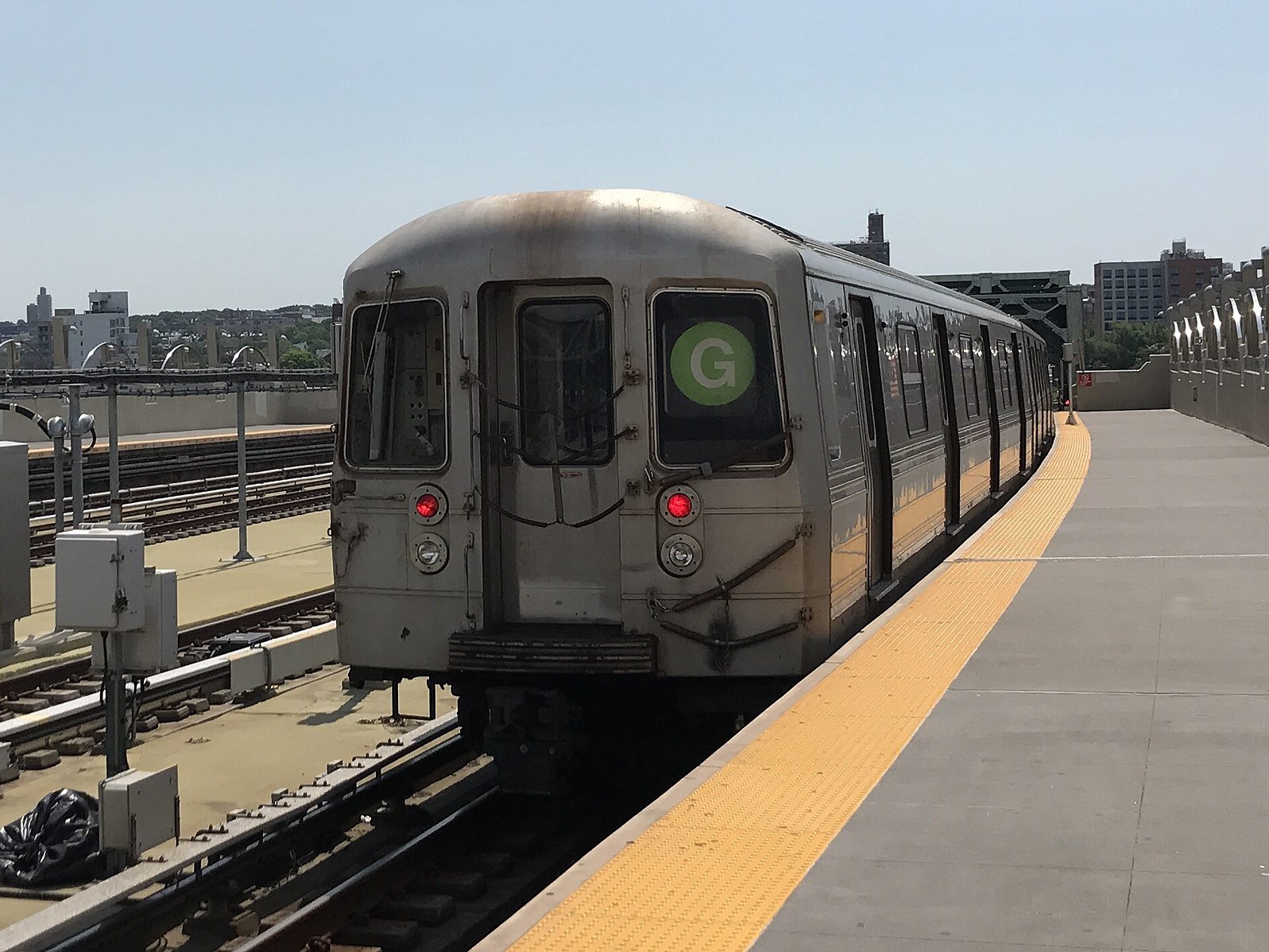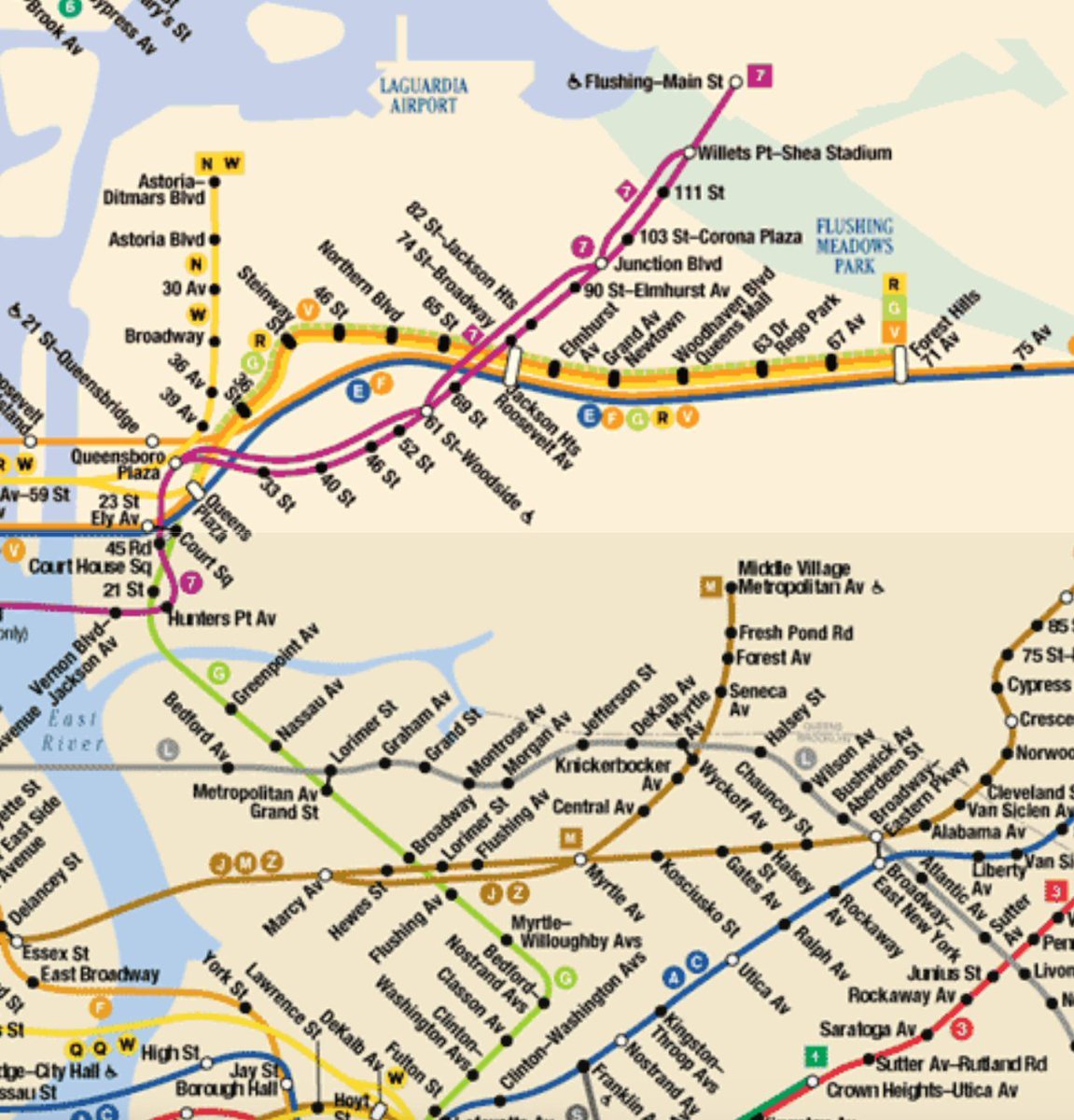Local pols want G train restored to former Queens glory
/A group of Queens and Brooklyn electeds are calling on the MTA to extend the G train route to Forest Hills. Wikimedia Commons photo by user R38R40
By Ryan Schwach
Several Queens and Brooklyn elected officials are calling on the MTA to consider running the G train along its former route, deeper into Queens, now that the transit authority has announced plans to do work on the line that will likely cause major service disruptions.
In a letter addressed to MTA brass on Wednesday, elected officials from parts of Queens and Brooklyn said that they want to see the MTA go a step – or a stop – further on their work by expanding the G train to its former terminus in Forest Hills, while also acknowledging the need for the scheduled changes.
The MTA is currently making upgrades to the line’s signaling technology, which has resulted in service changes between Bedford-Nostrand Avenue and Court Square overnight through Feb. 9. The service disruptions have created difficulties for Greenpoint and Long Island City straphangers who may otherwise be left without an underground alternative.
Headaches for riders could continue over the summer, when work on the line could disrupt G train service across Brooklyn and Queens. There likely won’t be G train service between Court Square and Greenpoint Avenue from June 28 to July 5, between Court Square and Bedford-Nostrand from July 5 until Aug. 12 and no service for Brooklyn riders from Aug. 12 through Sept. 2.
Those disruptions have the outer borough elected officials up in arms, particularly as the G – once known as an outcast route – is the only line that runs directly from Queens to Brooklyn
“While the planned multi-week shutdown of the G train this summer is highly distressing – and we urge the MTA to pursue a less disruptive schedule – New Yorkers understand that upgrades often mean inconvenience,” the officials said in the letter. “But the pain must match the gain.”
The elected officials who signed the letter include Queens Senator Kristen Gonzalez, Assemblymembers Steven Raga, Zohran Mamdani, Andrew Hevesi, Jessica González-Rojas, and Catalina Cruz as well as Councilmembers Shekar Krishnan, Tiffany Cabán and Jennifer Gutiérrez.
Along with fewer service disruptions as the MTA carries out its work, the electeds want to see the G train once again extended to Forest Hills in order to better service and give more transportation options for Queens and Brooklyn riders.
The G train currently runs from Church Avenue in Central Brooklyn to Long Island City. But before 2010, the route extended through Astoria, Woodside, Jackson Heights, Elmhurst and Rego Park all the way to Forest Hills.
But dilapidated tracks ultimately led to the route’s partial demise.
"It's not personal…if you want to keep the system up to date, you need to make sure the track and switching are all in good repair,” an MTA spokesperson told the Queens Chronicle at the time.
Although the change increased the frequency of trains running along the route, the officials say times have changed, and that the neighborhoods the G services are now some of the fastest growing in New York.
“Between 2010 and 2020, the population of Greenpoint and Williamsburg grew by 18 percent, while Long Island City saw its population increase by nearly 200 percent over the same period,” the officials wrote.
“Thousands more housing units are planned for the coming years in all of these neighborhoods,” they added.
Elected officials want to see the G train extend to Forest Hills, like it did before service changed in 2010. Assemblymember Emily Gallagher/Twitter
An extended G could essentially run along the pre-existing M line which serves portions of Central Queens.
The electeds also called for longer trains, saying the G is the shortest non-shuttle route in the system, and needs a full eight cars and more frequency.
“[The shorter trains lead] commuters to dangerously spring down the platform to catch the train,” they said. “Every other line is served by eight cars, ten cars or more.”
In response to the letter, the MTA assured the elected officials that they are committed to service along the route.
"The MTA is committed to delivering a world-class subway system for G train customers, including through upgrades to install modern, more reliable signals, and appreciates the perspectives of local leaders in Brooklyn and Queens on ways to improve the transit experience,” spokesperson Eugene Resnick said.
Down in Central Queens, where a new hypothetical G might terminate, some locals would be happy for the new transportation option.
“We have seen over the past several months that we need two local lines in Central Queens,” Queens Community Board 6 chair Heather Beers-Dimitriadis said. “Not have the M has been problematic. Diversifying the line and going to a G instead of an M gives us a Manhattan bound local option and a Brooklyn bound local option. This could be a real bonus. Imagine provide a direct route to Barclays for Queens residents and a direct route to Forest Hills Stadium for Brooklyn residents. And unlike the M it would be great to keep the G 7 days a week.”
“As a commuter and lover of the subway I think it makes sense,” she added.
The G has long had a reputation as an “outcast” among the many trains of the New York City subway system, and service changes including the one in 2010 have only served to harm the train line’s reputation.
In a 2008 New York Times article, a reporter remarked that the G was an “unwanted drunk uncle everyone has.”
In the same article, a rider remarked to a reporter that the only positive thing they could say about the G was that they “like the color green.”
Although one G train straphanger that the reporter spoke to was a little more positive.
“The thing people don’t realize is that it is actually on schedule,” the rider, identified as Antonia Santiago, said. “You gotta love the G train. If you love it, it’ll love you back.”
Elected officials are hoping the MTA gives the G train a little bit of love as service changes continue.
“The MTA must plan for the future and invest in the G line we deserve, with a full run of train cars and restored service in Queens,” their letter concluded, “We urge [the MTA] to seize this moment.”





